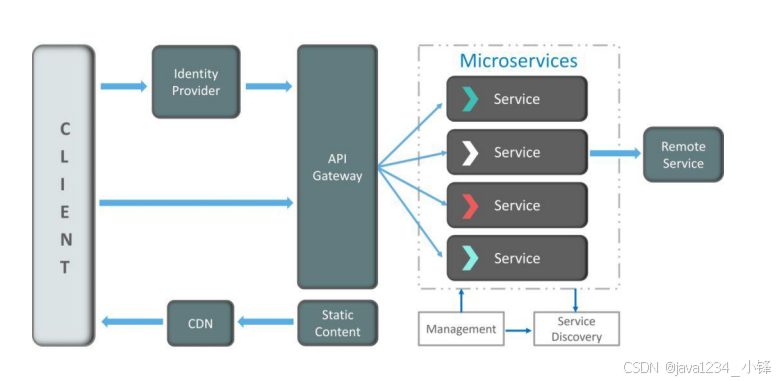一、引言
在 Web 地图开发领域,Vue3 作为一款流行的前端框架,结合强大的 OpenLayers 地图库,能够实现丰富多样的地图功能。其中,将地图数据以 GeoJSON 格式导出是一项常见且实用的需求,本文将深入探讨如何在 Vue3 环境下借助 OpenLayers 达成这一目标,并详细剖析 GeoJSON 格式文件。
二、准备工作
- 项目搭建
首先,确保你已经创建了一个 Vue3 项目。可以使用 Vue CLI 或者 Vite 等工具快速搭建项目骨架,安装必要的依赖,如 vue、@vue/compiler-sfc 等核心包。
- 引入 OpenLayers
通过 npm 安装 OpenLayers:npm install ol,然后在需要使用地图功能的组件中引入相关模块,例如:
import 'ol/ol.css';
import Map from 'ol/Map';
import View from 'ol/View';
import TileLayer from 'ol/layer/Tile';
import OSM from 'ol/source/OSM';三、在 Vue3 组件中使用 OpenLayers 绘制图形
为了后续导出 GeoJSON 文件,我们先得在地图上绘制一些图形。以下是一个简单示例,创建一个点要素并添加到地图图层:
<!--
* @Author: 彭麒
* @Date: 2024/12/21
* @Email: 1062470959@qq.com
* @Description: 此源码版权归吉檀迦俐所有,可供学习和借鉴或商用。
-->
<template>
<button class="back-button" @click="goBack">返回</button>
<div class="container">
<div class="w-full flex justify-center flex-wrap">
<div class="font-bold text-[24px]">在Vue3中使用OpenLayers导出GeoJSON文件</div>
</div>
<h4>
<el-button type="danger" size="small" @click="exportJson">导出GeoJSON</el-button>
</h4>
<div id="vue-openlayers"></div>
</div>
</template>
<script setup>
import { ref, onMounted } from 'vue';
import 'ol/ol.css';
import { Map, View } from 'ol';
import SourceVector from 'ol/source/Vector';
import { Tile } from 'ol/layer';
import OSM from 'ol/source/OSM';
import { saveAs } from 'file-saver';
import router from "@/router";
const goBack = () => {
router.push('/OpenLayers');
};
const map = ref(null);
const source = new SourceVector({ wrapX: false });
const view = new View({
projection: "EPSG:4326",
center: [8.2275, 6.8185],
zoom: 3
});
const exportJson = () => {
let feadata = {
"type": "FeatureCollection",
"features": [
{
"type": "Feature",
"geometry": { "type": "Point", "coordinates": [102.0, 0.5] },
"properties": { "prop0": "value0" }
},
{
"type": "Feature",
"geometry": {
"type": "LineString",
"coordinates": [
[102.0, 0.0], [103.0, 1.0], [104.0, 0.0], [105.0, 1.0]
]
},
"properties": {
"prop0": "value0",
"prop1": 0.0
}
},
{
"type": "Feature",
"geometry": {
"type": "Polygon",
"coordinates": [
[[100.0, 0.0], [101.0, 0.0], [101.0, 1.0], [100.0, 1.0], [100.0, 0.0]]
]
},
"properties": {
"prop0": "value0",
"prop1": { "this": "that" }
}
}
]
};
const content = JSON.stringify(feadata);
const blob = new Blob([content], { type: 'text/plain;charset=utf-8' });
saveAs(blob, 'data.geojson');
};
const initMap = () => {
map.value = new Map({
target: 'vue-openlayers',
layers: [
new Tile({
source: new OSM()
}),
],
view: view
});
};
onMounted(() => {
initMap();
});
</script>
<style scoped>
.container {
width: 840px;
height: 570px;
margin: 50px auto;
border: 1px solid #42B983;
}
#vue-openlayers {
width: 800px;
height: 400px;
margin: 0 auto;
border: 1px solid #42B983;
position: relative;
}
</style>这里我们创建了一个按钮,点击时获取矢量源中的所有要素,利用 ol.format.GeoJSON 格式化工具将其转换为 GeoJSON 字符串,接着创建一个 Blob 对象包装数据,生成下载链接,最后模拟点击下载链接实现文件下载,并且记得清理创建的临时 URL。
五、GeoJSON 格式详解
GeoJSON 是一种基于 JavaScript 对象表示法(JSON)的地理空间数据交换格式,它简洁且易于读写,被广泛应用于 Web 地图开发等领域。
- 基本结构
一个典型的 GeoJSON 对象包含一个 type 字段和一个 coordinates 字段(不同几何类型下该字段结构有差异)。例如,对于一个点要素:
{
"type": "Feature",
"geometry": {
"type": "Point",
"coordinates": [10, 10]
},
"properties": {}
}这里 type 为 Feature 表示这是一个地理要素,geometry 描述了几何形状(这里是点,坐标为 [10, 10]),properties 可用于存放自定义属性,比如地名、要素类别等信息,当前为空。
2. 几何类型
- 点(Point):如上述示例,由单个坐标对表示,在三维空间中可以是 [x, y, z],但常见二维 [x, y]。
- 线(LineString):由一系列坐标点组成的有序数组,例如:
{
"type": "Feature",
"geometry": {
"type": "LineString",
"coordinates": [[0, 0], [1, 1], [2, 2]]
}
}表示一条连接 [0, 0]、[1, 1]、[2, 2] 三个点的折线。
- 多边形(Polygon):由一个外部环和零个或多个内部环组成,每个环都是一个坐标点数组,外部环定义多边形边界,内部环表示内部空洞(若有),如:
{
"type": "Feature",
"geometry": {
"type": "Polygon",
"coordinates": [[[0, 0], [0, 1], [1, 1], [1, 0], [0, 0]]]
}
}定义了一个简单的矩形多边形。
3. 要素集合(FeatureCollection)
当有多个地理要素时,通常使用 FeatureCollection 包装,例如:
{
"type": "FeatureCollection",
"features": [{
"type": "Feature",
"geometry": {
"type": "Point",
"coordinates": [10, 10]
}
},
{
"type": "Feature",
"geometry": {
"type": "LineString",
"coordinates": [[0, 0], [1, 1], [2, 2]]
}
}]
}它允许将多个点、线、多边形等要素统一组织,方便传输与存储。
六、总结
通过本文,我们了解了在 Vue3 项目中整合 OpenLayers 实现地图绘制以及将地图要素导出为 GeoJSON 文件的方法,同时深入学习了 GeoJSON 格式的构成与各类几何类型细节。这为后续处理地理空间数据、与后端交互或在不同地图平台间共享数据奠定了坚实基础,开发者可基于此进一步拓展功能,如优化绘制工具、丰富导出选项等,以满足更复杂的业务需求。




![[计算机网络]ARP协议的故事:小明找小红的奇妙旅程](https://i-blog.csdnimg.cn/direct/b3267235bfec4903a797f994d74bc253.png)














